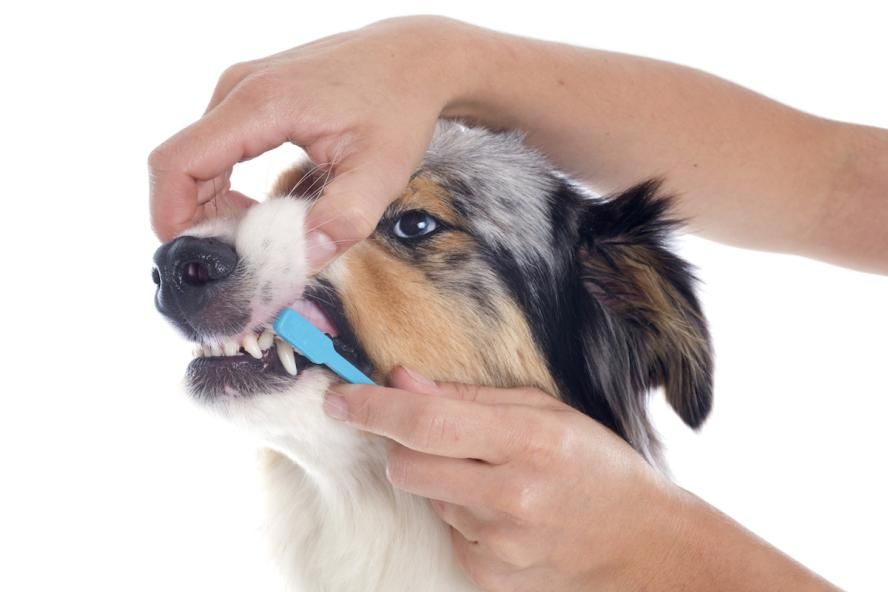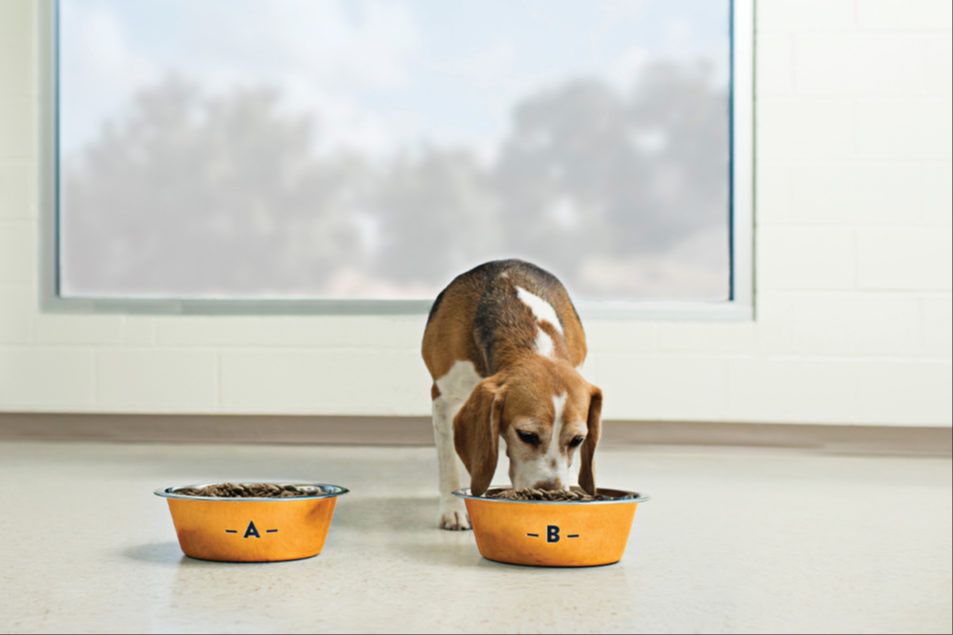Introduction
There has been an ongoing debate among dog owners and veterinarians about whether canned or dry dog food is healthier for dogs. Both canned and dry dog foods have their advantages and disadvantages in terms of ingredients, nutrients, convenience, palatability, dental health, and cost. With so many factors to consider, it can be difficult for dog owners to decide which type of food is best for their furry friend.
On one side of the debate, advocates claim canned food is healthier due to its high moisture content, which can aid digestion. Meanwhile, supporters of dry dog food argue it promotes better dental health by scraping plaque off teeth. This article will analyze the nutritional value, cost, convenience, and health impacts of both canned and dry dog food options to help dog owners make an informed decision.
Nutritional Differences

A key difference between canned and dry dog foods is their water content. Canned food typically contains 70-80% moisture, while dry food only contains 10% moisture. This higher moisture content means canned food has fewer carbohydrates and is more calorically dense per volume compared to dry food.
Dry dog foods commonly use plant-based protein sources like corn and wheat, while canned foods more often contain meat as the primary protein. Canned food tends to have higher quality sources of protein like beef, chicken, lamb or fish. Still, some premium dry kibbles do focus on quality animal proteins like fresh meats, fish or eggs.
https://www.petmd.com/dog/nutrition/dry-dog-food-vs-wet-dog-food-which-better
Canned food contains fewer carbohydrates, since the high moisture content reduces the need for fillers. Dry kibble relies more heavily on carbs from grains, starch and legumes to create those crunchy pieces. But some grain-free dry foods use potatoes, tapioca or lentils instead.
In terms of fats, canned food tends to contain higher fat percentages to increase palatability. This provides more concentrated energy from animal-based fats rather than plant oils. But high-quality dry foods include healthy fats too, like omega-3 and omega-6 fatty acids from fish, flaxseed and other sources.
Ingredients

Canned dog foods contain many of the same ingredients as dry foods, including meat, grains, vegetables, vitamins, and minerals. However, canned foods tend to have higher moisture content and fewer carbohydrates. Preservatives like potassium sorbate and citric acid are commonly added to canned foods to prevent spoilage and bacterial growth (Source).
Thickeners such as guar gum or carrageenan are often used in canned dog food to improve consistency and texture. Some sources raise concerns about potential links between carrageenan and gastrointestinal issues in dogs, but evidence is limited (Source). Artificial flavors are sometimes added for palatability.
When selecting canned foods, it’s important to read the ingredients list and look for quality sources of protein, whole grains when included, and minimal artificial preservatives or additives. Some of the highest quality canned foods contain recognizable ingredients like actual meat cuts rather than by-products or meals.
Convenience
Dry dog food is generally more convenient than wet dog food for a few reasons:
Storage – Dry kibble can be stored easily in a bag or container, while canned wet food needs to be refrigerated after opening. Kibble can be left out in a bowl for the day without spoiling. (Source)
Feeding – Kibble is easier to portion out into meals compared to canned food. Owners can pre-measure dry food in advance. (Source)
Traveling – Carrying dry kibble on trips or to the park is simpler than bringing canned food that requires refrigeration. Kibble is less messy and easier to transport. (Source)
Dental Health
Dry dog food is generally better for dogs’ dental health than canned wet food. According to Chewy, dry kibble can help clean dogs’ teeth as they chew, while the softer canned food does not provide the same abrasive benefits. Specific dental health formulas, like Purina Pro Plan Veterinary Diets DH Dental Health, include kibble that is specially designed and tested to reduce plaque and tartar buildup.

The crunchy texture of dry dog food helps scrape away plaque and tartar as the dog chews. This provides a similar mechanical cleaning function as brushing the dog’s teeth. Canned wet foods do not have this abrasive texture, so do not clean the teeth in the same manner. Over time, regular feeding of dry kibble can help maintain better dental health compared to primarily feeding canned food.
Of course, regular tooth brushing and professional dental cleanings from a veterinarian are still important. But day-to-day, a high quality dry kibble diet supports better dental health for dogs compared to canned wet food.
Digestion
Canned dog food is usually easier for dogs to digest than dry kibble. This is because the canning process softens the food and makes it easier to break down in a dog’s digestive system. Many canned foods also contain more moisture than dry foods, which helps aid digestion and prevents constipation or dehydration. For dogs with sensitive stomachs or digestive issues like inflammatory bowel disease, canned food is often recommended over dry. The softer texture puts less strain on the digestive tract. Additionally, some canned foods designed for sensitive stomachs contain prebiotics, probiotics, and specialized fibers to support healthy digestion. For example, Hill’s Science Diet Wet Dog Food for sensitive stomachs contains prebiotic fiber to promote regular bowel movements and healthy gut flora.
Cost
When looking at the cost of canned versus dry dog food, canned generally costs more. According to Tufts University, feeding only wet dog food costs about 5 times as much as only feeding dry food. On Amazon, a 30 lb bag of Taste of the Wild dry food is $47, while twelve 13.2 oz cans (10 lbs) of Taste of the Wild wet food is $43. As noted by NomNomNow, canned foods with their high moisture content tend to be heavier, so you get less actual food per pound. This makes canned food significantly more expensive than dry kibble when comparing cost per day or per pound of food.
In summary, canned dog food costs more than dry kibble, with some estimates putting canned at 5 times the price. The higher moisture content in canned food means you get less actual food per pound, driving up the costs.
Palatability

Dogs tend to show a strong preference for the taste of canned dog foods over dry kibble, according to several studies. Research has found that the majority of dogs prefer the taste of canned food and rank it as more palatable than kibble. One study published in the Journal of Animal Physiology and Animal Nutrition tested dogs’ preferences repeatedly and found their liking for canned food strengthened over time.
Experts believe the higher moisture content and oil used for palatability enhancement in canned foods contribute to dogs finding the taste more appealing. The meat ingredients also tend to be fresher and less processed in canned foods. Overall, dogs perceive canned food as more delicious due to its texture and stronger aroma.
Veterinarian Recommendations
According to the American Society for the Prevention of Cruelty to Animals (ASPCA), veterinarians generally do not express a strong preference for wet or dry dog food[1]. The main considerations are the dog’s individual nutritional needs, texture preferences, and any health issues they may have. Here are some of the pros and cons veterinarians cite when recommending wet or dry dog food:
Pros of wet dog food:
- Typically contains more meat protein than dry food
- May be more palatable for picky eaters or dogs with decreased appetite
- Moist texture may benefit dogs with dental issues
Cons of wet dog food:
- Potential for tooth decay if not supplemented with dry kibble
- Shorter shelf life once opened compared to dry
- More expensive per calorie than dry food
Pros of dry dog food:
- Crunchy texture helps clean teeth and reduce plaque
- Typically more affordable than wet food
- Longer shelf life when stored properly
Cons of dry dog food:
- Contains less moisture than wet food
- May need added water to increase palatability
- Potential to dehydrate pets if insufficient water intake
Most veterinarians recommend choosing a quality dog food, whether wet or dry, that provides balanced nutrition tailored to your dog’s needs.
Conclusion
Both canned and dry dog food can provide good nutrition for dogs. However, there are some key differences between the two that pet owners should consider when choosing the best diet for their pup:
– Canned food typically has higher moisture content and more animal protein than dry kibble. This can aid digestion and hydration.
– Dry food is usually more affordable per serving and easier to store long-term. It can also help clean teeth.
– Canned food tastes more palatable to some dogs. But dry food provides a satisfying chewing experience.
– Veterinarians may recommend one or the other for dogs with certain health conditions. Otherwise, both can be part of a balanced diet.
The optimal solution is often to feed a combination of wet and dry food. This gives dogs the benefits of both. Work with your vet to determine the right ratio based on your dog’s needs. As long as you choose quality brands and formulas, both canned and kibble can provide complete and balanced daily nutrition.